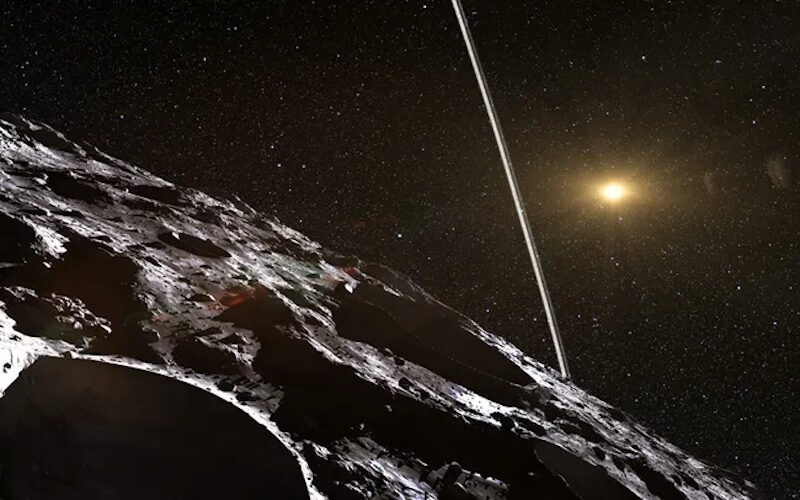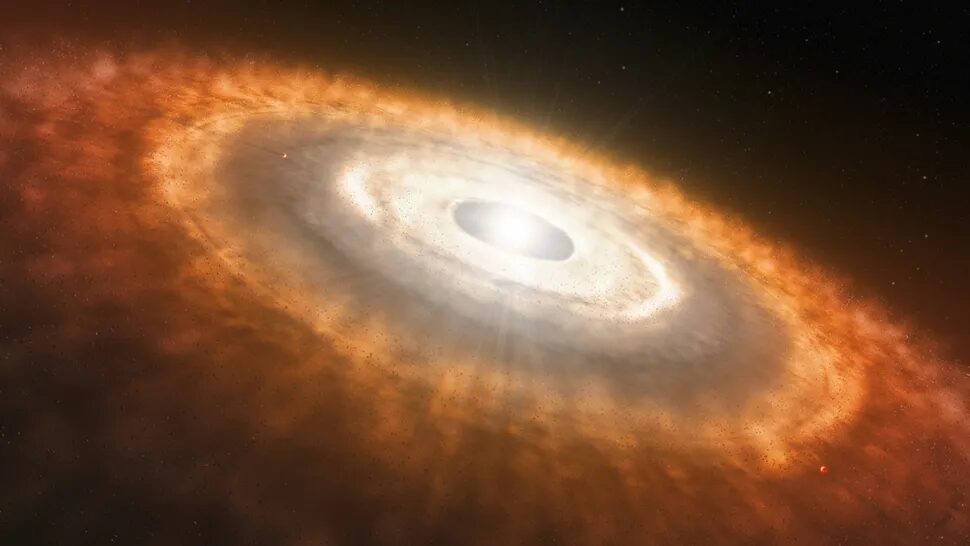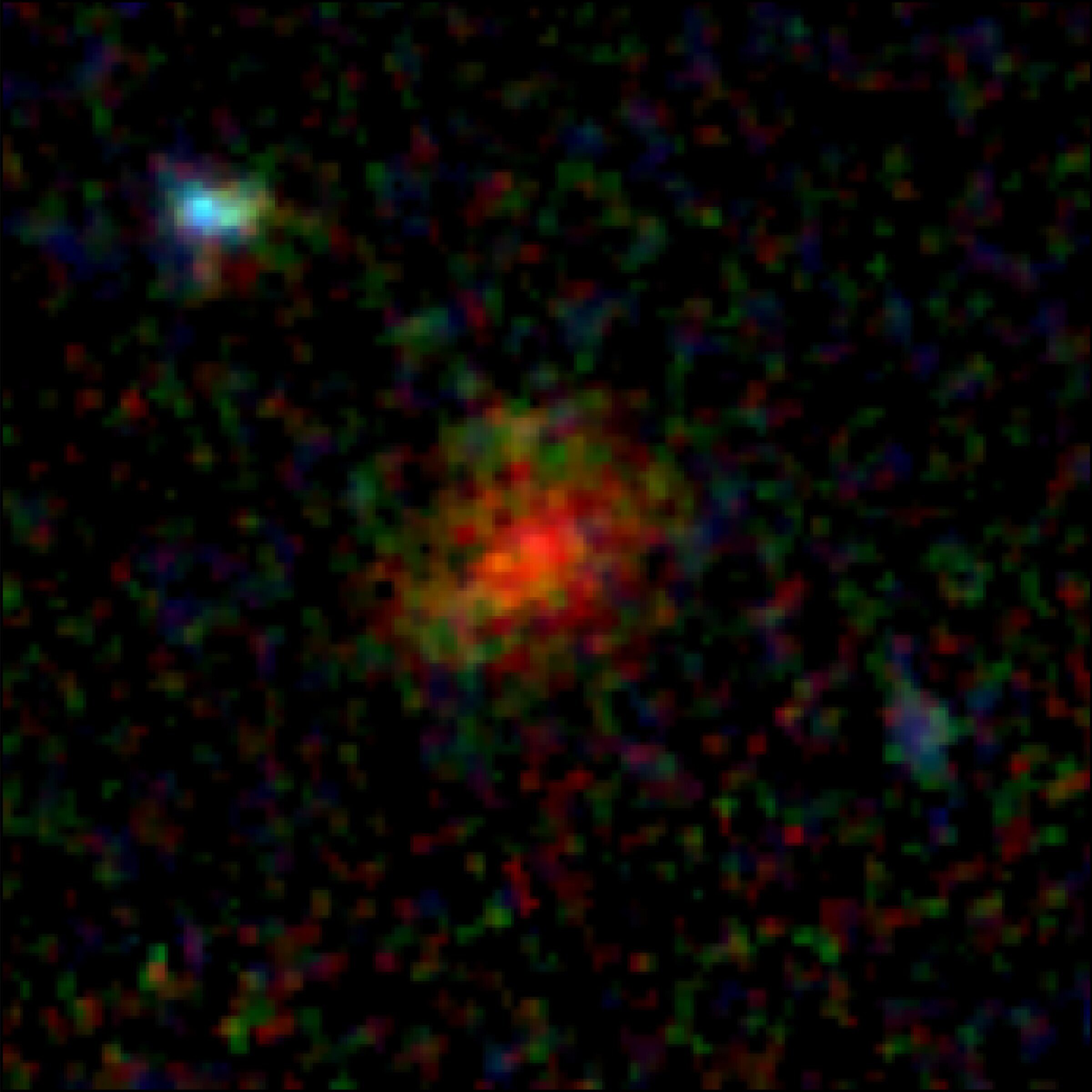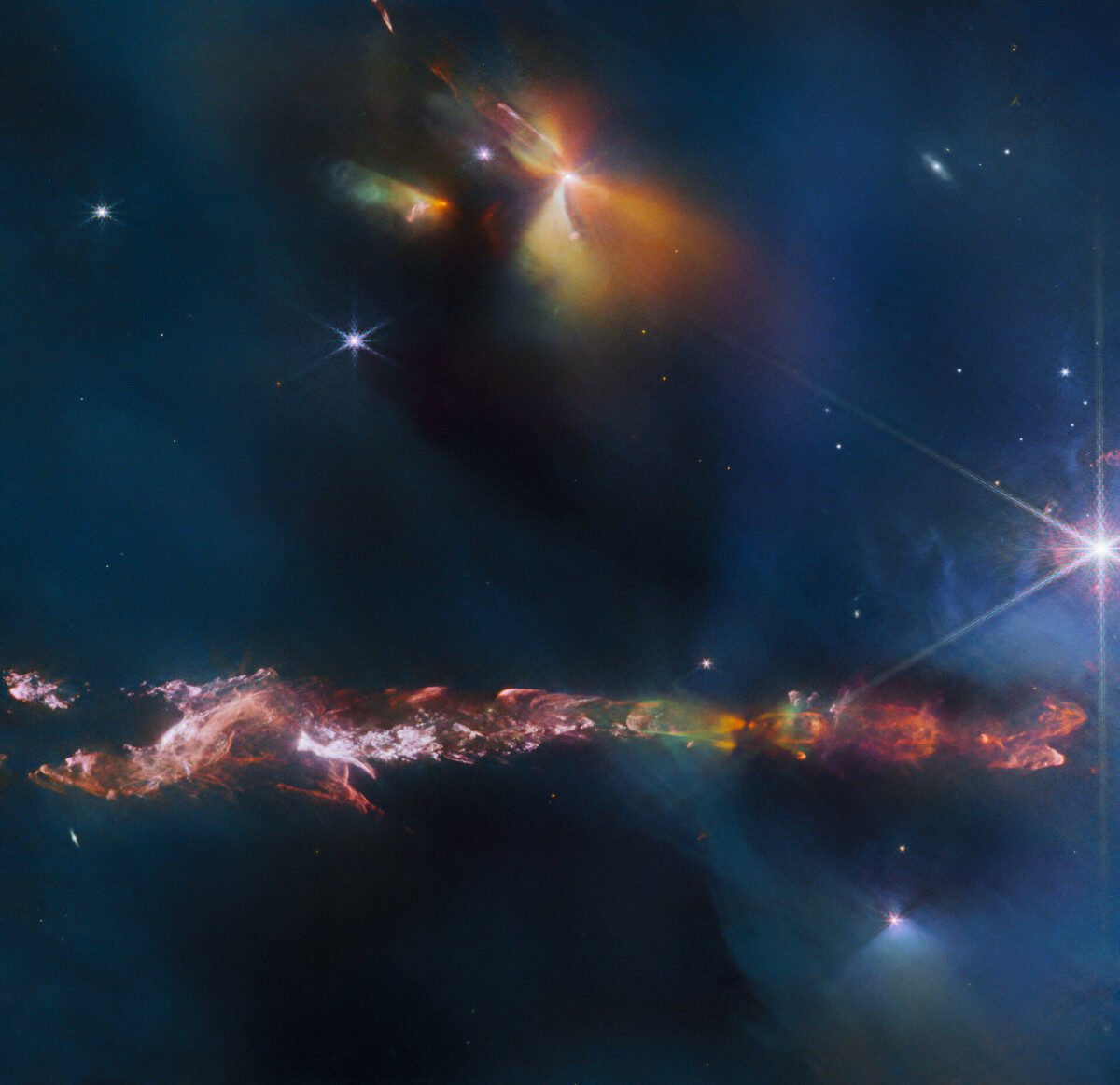
© European Southern ObservatoryAn illustration shows the rings from the surface of the ice-rock centaur Chiron.
A bizarre object that sometimes gets as close to the sun as Saturn, and other times retreats as far out as Uranus, has been discovered to have a transforming disk of dust around it that changes shape and can even mimic rings.
Minor planet 2060 Chiron is what's known as a Centaur, which are captured cometary objects that travel around the sun on looping orbits between Jupiter and Neptune. Chiron is just 218 kilometers (135 miles) across and occasionally has outbursts like a comet. To date, however, no spacecraft has ever visited a Centaur.
In 2011, Chiron passed in front of a faint star from our point of view here on Earth. Such events are referred to as "stellar occultations," and based on how an object such as Chiron blocks a star's light, the occulting object's shape and size can be determined through deduction. During the 2011 occultation, it was noticed that the star's light dimmed slightly — twice before Chiron itself occulted the star, and two further times after Chiron had moved past the star. This observation was interpreted as Chiron having a double-ring system of dust.
Then, Chiron occulted another star on Nov. 28, 2018, in an event taken advantage of by Amanda Sickafoose, who is a senior scientist at the Planetary Science Institute in Tucson, Arizona. Because Chiron's shadow cast by the star is so small, it crossed only a narrow region of the Earth, clipping southern Africa. Sickafoose therefore led a team who used the 1.9-meter (6.2 feet) telescope at the South African Astronomical Observatory in Sutherland, South Africa, to observe the occultation.
Their results, published exactly five years later, tell a slightly different story to 2011.





Comment: Independent researchers are attempting to forecast potential seismic events by taking into account cosmic energy inputs and modulators and their effect on quake activity; and, notably, even mainstream science is beginning to discover that there is indeed a correlation:
- Seismic signals from Space: Intriguing correlation between earthquakes and cosmic radiation discovered
- 'Goddess particle': Earth slammed by ultra-powerful cosmic ray, and we have no idea where it came from
One such independent researcher is Frank Hoogerbeets:Also check out SOTT radio's: